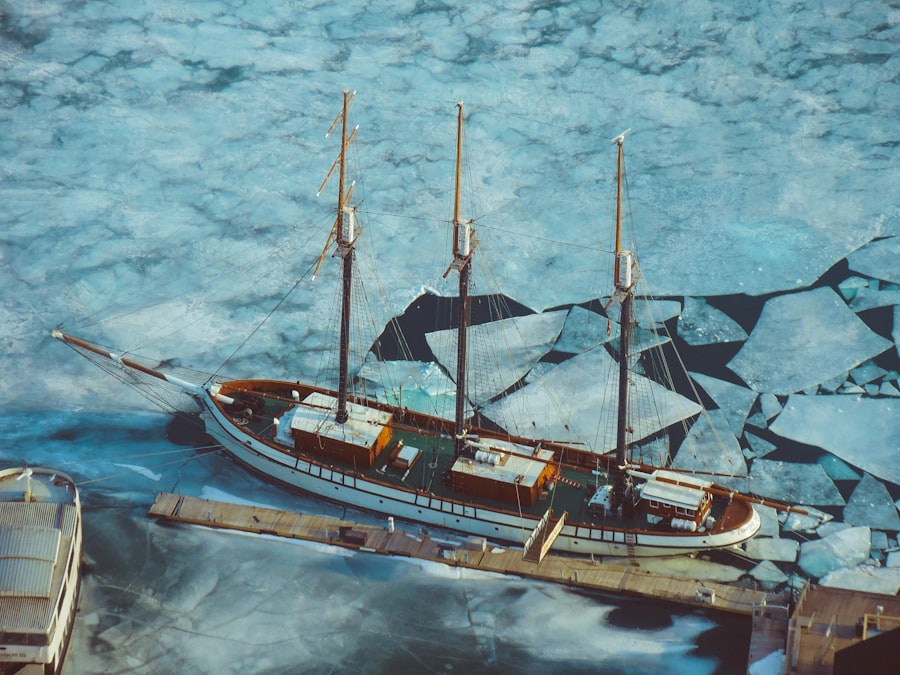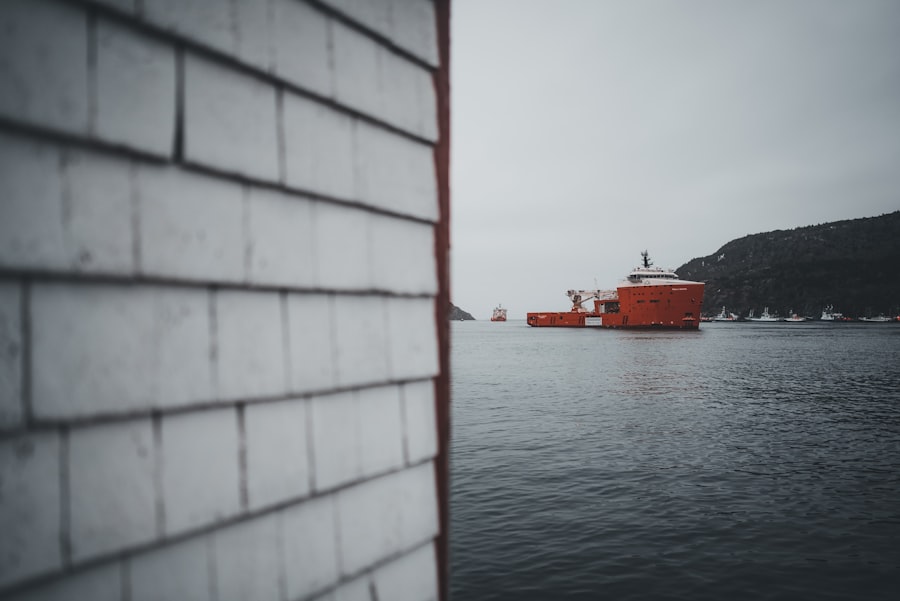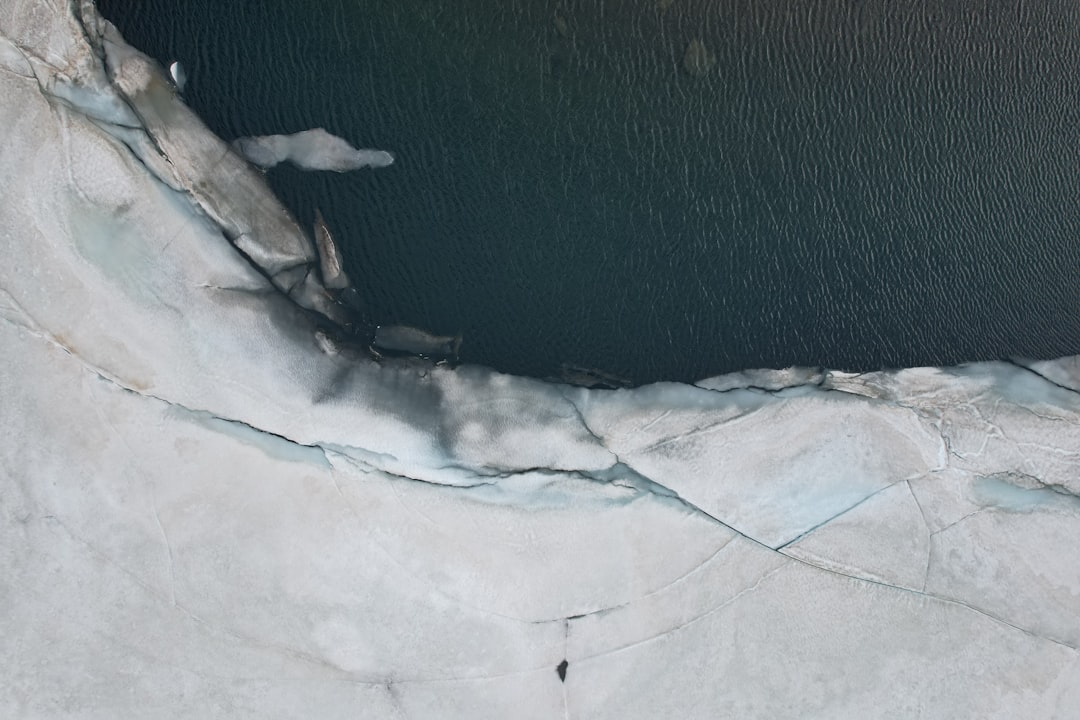The Drake Passage, a body of water situated between the southern tip of South America and Antarctica, is renowned for its tumultuous seas and unpredictable weather. Named after the English explorer Sir Francis Drake, who navigated these waters in the late 16th century, the passage serves as a critical maritime route for vessels traveling to and from Antarctica. Spanning approximately 800 kilometers (500 miles) in width, it is often characterized by its rough waters, which can pose significant challenges for even the most seasoned mariners.
The passage is not only a geographical landmark but also a vital ecological zone, playing a crucial role in the global climate system and marine biodiversity. The Drake Passage is often described as the point where the Atlantic and Pacific Oceans converge, creating a unique marine environment. This convergence results in a rich tapestry of oceanic currents, which influence weather patterns and marine life across the Southern Hemisphere.
The passage is also home to a variety of wildlife, including whales, seals, and seabirds, making it an area of interest for researchers and tourists alike. As such, the Drake Passage is more than just a navigational challenge; it is a dynamic ecosystem that reflects the intricate balance of nature in one of the world’s most remote regions.
Key Takeaways
- Drake Passage is a treacherous body of water located between the southern tip of South America and the northern tip of the Antarctic Peninsula.
- The passage is a crucial route for travel to Antarctica, providing access for research expeditions, cruise ships, and expedition vessels.
- Closure of Drake Passage can be caused by extreme weather conditions, icebergs, and other natural factors, leading to significant implications for Antarctic travel.
- The closure of Drake Passage can disrupt Antarctic research and expeditions, impacting scientific studies and environmental monitoring efforts.
- Alternative routes for Antarctic travel may present environmental consequences and economic challenges, requiring careful consideration for the future of Antarctic tourism and research.
Importance of Drake Passage for Antarctic Travel
The significance of the Drake Passage in facilitating Antarctic travel cannot be overstated. For many expedition vessels and cruise ships, traversing this passage is often the only viable route to reach the Antarctic Peninsula and its surrounding islands. The passage serves as a gateway for scientific research, tourism, and exploration, allowing access to one of the last frontiers on Earth.
The journey through the Drake Passage is often seen as a rite of passage for adventurers and researchers alike, marking the transition from the familiar landscapes of South America to the stark beauty of Antarctica. Moreover, the Drake Passage plays a pivotal role in regulating ocean currents and temperatures, which are essential for maintaining the delicate balance of marine ecosystems. The mixing of waters from different oceans creates nutrient-rich environments that support diverse marine life.
This ecological importance underscores the need for safe navigation through the passage, as disruptions can have far-reaching consequences for both human activities and natural habitats. As such, understanding the dynamics of the Drake Passage is crucial for anyone involved in Antarctic travel.
Closure of Drake Passage: Causes and Implications

The closure of the Drake Passage, while seemingly improbable given its historical significance as a maritime route, has become a topic of concern among scientists and maritime experts. Various factors contribute to this phenomenon, including climate change, shifting ocean currents, and geological activity. As global temperatures rise, melting ice from Antarctica alters salinity levels and water temperatures in the surrounding seas.
These changes can lead to unpredictable weather patterns and increased storm activity, making navigation through the passage more hazardous. The implications of a closed or significantly altered Drake Passage are profound. For one, it would disrupt established shipping routes that are vital for transporting goods and personnel to Antarctica.
This disruption could hinder scientific research efforts that rely on timely access to remote locations for data collection and observation. Additionally, the closure could impact tourism, as many travelers seek the thrill of crossing the notorious waters of the Drake Passage as part of their Antarctic adventure. The potential for increased maritime accidents and environmental degradation further complicates the situation, highlighting the urgent need for comprehensive studies on this critical waterway.
Effects on Antarctic Research and Expeditions
| Impact | Description |
|---|---|
| Logistics | Challenges in transporting equipment and supplies due to harsh weather conditions and remote locations. |
| Communication | Difficulty in maintaining communication with research teams in remote areas. |
| Health and Safety | Risk of exposure to extreme cold, isolation, and limited medical facilities. |
| Funding | High costs associated with conducting research and expeditions in Antarctica. |
| Environmental Impact | Concerns about the impact of human activities on the delicate Antarctic ecosystem. |
The ramifications of a closed Drake Passage extend deeply into the realm of Antarctic research and expeditions. Scientists depend on reliable access to various research stations scattered across the continent for their studies on climate change, glaciology, and marine biology. A closure or significant alteration in navigability would impede these research efforts, delaying critical data collection and potentially stalling ongoing projects aimed at understanding global climate dynamics.
Moreover, many research expeditions are time-sensitive, requiring precise timing for seasonal observations. The inability to traverse the Drake Passage could lead to missed opportunities for data collection during key periods, such as breeding seasons for wildlife or critical phases in glacial melt cycles. This disruption could have cascading effects on scientific understanding and policy-making regarding climate change mitigation strategies.
As researchers grapple with these challenges, they may find themselves increasingly reliant on alternative methods of transportation or technology to gather data, which may not be as effective or comprehensive as traditional fieldwork.
Impact on Tourism to Antarctica
Tourism to Antarctica has grown significantly over recent years, with many travelers eager to experience its breathtaking landscapes and unique wildlife. The Drake Passage has long been an integral part of this experience; crossing its turbulent waters is often viewed as an adventure in itself. However, if the passage were to close or become increasingly difficult to navigate, it would have dire consequences for this burgeoning industry.
Travelers seeking to explore Antarctica may find their options severely limited if traditional routes are compromised. This could lead to increased costs as operators seek alternative paths or methods of transportation that may not be as efficient or direct. Additionally, a decline in tourism could have economic repercussions for local communities in South America that rely on income generated from Antarctic tourism.
The potential loss of jobs and revenue could create a ripple effect throughout the region, underscoring the interconnectedness of global travel networks.
Alternative Routes for Antarctic Travel

In light of potential closures or navigational challenges posed by the Drake Passage, alternative routes for Antarctic travel are being explored. While there are no direct substitutes that can replicate the experience of crossing the Drake Passage, some maritime experts are investigating routes that skirt around it or utilize different entry points into Antarctic waters. These alternatives may involve longer journeys or different types of vessels better suited for calmer waters.
However, these alternative routes come with their own set of challenges. For instance, navigating through less familiar waters may require additional expertise and resources, potentially increasing operational costs for expedition companies. Furthermore, these routes may not provide access to all desired destinations within Antarctica, limiting travelers’ experiences and opportunities for exploration.
As such, while alternative routes may offer solutions in response to potential closures of the Drake Passage, they also raise questions about accessibility and feasibility for future Antarctic travel.
Challenges for Cruise Ships and Expedition Vessels
Cruise ships and expedition vessels face numerous challenges when navigating through or around the Drake Passage. The unpredictable weather patterns characteristic of this region can lead to rough seas that pose risks to both passengers and crew members. High waves and strong winds can make navigation treacherous, necessitating advanced planning and skilled seamanship to ensure safe passage.
Additionally, vessels must contend with environmental regulations aimed at protecting fragile ecosystems in Antarctic waters. Compliance with these regulations can complicate logistics and increase operational costs for cruise operators. As they navigate these challenges, companies must balance safety concerns with providing memorable experiences for travelers eager to explore one of Earth’s last frontiers.
The need for enhanced training and preparedness among crew members becomes paramount as they face an increasingly complex maritime environment.
Economic Consequences of Drake Passage Closure
The economic consequences stemming from a closure or significant alteration of the Drake Passage would be far-reaching. For countries like Argentina and Chile, which serve as primary gateways for Antarctic expeditions, a decline in maritime traffic could lead to substantial losses in revenue generated from tourism and research activities. Local businesses that cater to tourists—such as hotels, restaurants, and tour operators—would likely suffer as well.
Moreover, industries reliant on scientific research conducted in Antarctica could face setbacks due to disrupted access to research stations. Funding for projects may dwindle if researchers are unable to reach their study sites or if logistical challenges increase costs beyond budgetary constraints. The potential economic fallout underscores the importance of proactive measures aimed at preserving navigability through this critical waterway while also addressing broader environmental concerns.
Environmental Consequences of Alternative Routes
While exploring alternative routes for Antarctic travel may seem like a viable solution in response to potential closures of the Drake Passage, these alternatives come with their own environmental consequences. New routes may traverse previously untouched marine ecosystems or sensitive habitats that could be adversely affected by increased maritime traffic. The introduction of vessels into these areas raises concerns about pollution, noise disturbances, and potential collisions with wildlife.
Furthermore, alternative routes may not be equipped with established protocols for environmental protection that have been developed over years of navigating through the Drake Passage. This lack of experience could lead to unintentional harm to fragile ecosystems already under threat from climate change and human activity. As expedition companies consider new pathways into Antarctica, they must prioritize environmental stewardship alongside operational feasibility to ensure that their activities do not exacerbate existing challenges facing this pristine region.
Future Outlook for Antarctic Travel
The future outlook for Antarctic travel remains uncertain amid concerns regarding the navigability of the Drake Passage. As climate change continues to reshape oceanic conditions and weather patterns, stakeholders must remain vigilant in monitoring these changes while adapting their strategies accordingly. Collaborative efforts among governments, researchers, and industry leaders will be essential in addressing both navigational challenges and environmental protection.
Innovations in technology may also play a role in shaping future travel options to Antarctica. Advances in vessel design could lead to ships better equipped to handle rough seas or navigate alternative routes safely.
Navigating the Challenges of Drake Passage Closure
In conclusion, the potential closure or significant alteration of the Drake Passage presents multifaceted challenges that extend beyond mere navigation concerns. From its critical role in facilitating Antarctic travel to its implications for research efforts and tourism industries, understanding these complexities is essential for all stakeholders involved. As climate change continues to impact this vital waterway, proactive measures must be taken to ensure safe passage while safeguarding fragile ecosystems.
The future of Antarctic travel hinges on collaboration among governments, researchers, and industry leaders who must work together to navigate these challenges effectively. By prioritizing environmental stewardship alongside operational feasibility, stakeholders can strive toward sustainable solutions that honor both adventure seekers’ aspirations and the delicate balance of nature in one of Earth’s most remote regions. As they face an uncertain future ahead, those involved in Antarctic travel must remain adaptable and committed to preserving this unique environment for generations to come.
The recent closure of the Drake Passage has sparked significant interest and concern among maritime experts and environmentalists alike. This critical waterway, known for its challenging conditions and strategic importance, plays a vital role in global shipping routes and ecological balance. For those interested in exploring more about the geographical and environmental implications of such events, a related article can be found on MyGeoQuest. This resource provides in-depth insights into the dynamics of global waterways and their impact on both human activity and natural ecosystems. To learn more, visit the article on MyGeoQuest.
WATCH NOW! Drake Passage: Earth’s Deadliest Waters Revealed
FAQs
What is the Drake Passage?
The Drake Passage is the body of water between the southern tip of South America and the northern tip of the Antarctic Peninsula. It is known for its rough seas and strong winds, making it a challenging route for ships to navigate.
Why would the Drake Passage be closed?
The Drake Passage may be closed due to extreme weather conditions, such as heavy storms, high winds, and rough seas. These conditions can make it unsafe for ships to travel through the passage.
How does the closure of the Drake Passage affect travel and shipping?
The closure of the Drake Passage can disrupt travel and shipping routes between South America and Antarctica. It can cause delays and cancellations for cruise ships, research vessels, and cargo ships that rely on this route for transportation.
Are there alternative routes when the Drake Passage is closed?
When the Drake Passage is closed, ships may have to consider alternative routes, such as traveling around the southern tip of South America or through the Panama Canal. However, these routes may be longer and more costly.
Who makes the decision to close the Drake Passage?
The decision to close the Drake Passage is typically made by maritime authorities and weather forecasting agencies, based on the safety and navigational concerns posed by the current weather conditions.
